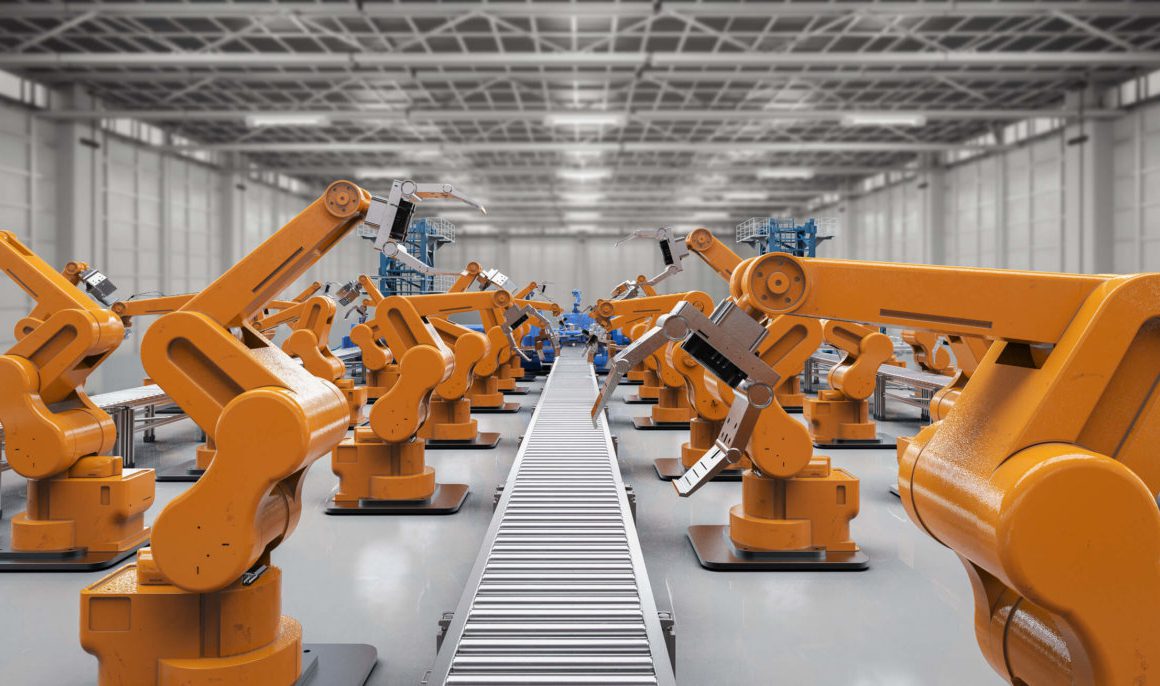Under COVID-19, where production depends more and more on automation due to the social distancing and the increasing number of patients, advances in robotics and artificial intelligence continue to thrive the industry against all odds. However, nowhere is the rising importance of robotics and artificial intelligence more evident than today’s modern supply chain. Thanks to the speed and efficiency improvements, these technologies are reshaping the future of logistics in all facets of the global supply chain, thus helping humanity save the day -and the foreseeable future, and keep the wheels of the economy turning.
What is robotics in logistics?
Logistics could be defined by the process of manufacturing, storing, and distributing the goods. However, robotics applied to industrial distribution means using robots and machinery with intelligent systems to automate tasks like organization, transfers, delivery, and product retrieval in a warehouse. Without a doubt, much more complicated and dynamic journey than the definition suggests.
Today’s modern enterprises constantly seek ways to benefit from robotics and artificial intelligence, which drastically improve efficiency with a minimum margin for error. Needless to mention that these game-changer technologies cause not only positive consequences for some but also some adverse outcomes for others. Therefore, before this scenario becomes more mainstream, companies and manufacturers have to become familiar with robotics and machine learning. With the aid of digital transformation, companies will soon begin to implement robots and AI to handle mundane tasks and more complex systems that create even more value for the companies that deploy them.
The coin has the (hidden) side
Once the robots become smarter, the next question is how they will disrupt and reshape the supply chain and logistics sector. “Robots are starting to play an important role in the retail value chain because managing an efficient and accurate supply chain is key to ensuring inventory availability, which impacts revenue, growth, and profitability,” said PRK Krishnan, the vice president and global head of Enterprise Intelligence Automation. “For example, robots and robotic technologies can be utilized in both front-end and back-end retail operations.” Krishnan said AI brings the efficiency that supply chain leaders are so hungry for. For example, the order-to-cash cycle is a key process in supply chain management. In short, with the increase of e-commerce, the automation seems the only way. But the investors should be aware of the hidden catch, such as supply shortages, demand variation, communication gaps, quality variations, and others that create bottlenecks and increase costs.
Pros and cons of robotics applied to distribution
As the e-commerce and on-demand economy continue to grow worldwide, a new generation of autonomous mobile robots helps companies tackle significant labor challenges posed by this rapid expansion and demand. A recent report by Tractica Research estimates that the worldwide sales of warehousing and logistics robots will reach $22.4 billion by the end of 2021, with robot unit shipments reaching 620,000 units per year by 2021. The main advantage of applying robotics in distribution is to reduce the costs between 20% and %40 while increasing productivity between %25 and %70 according to a study by Roland Berger that analyzes the impact of robotics on logistics 2025. These figures are by far no means to neglect as the pandemic disrupts the economies in unpredictable ways. Secondly, robotics and AI reduce frictions in warehouse operations as they are automatic and enable fast identification of any item. Besides, the robots can be easily configured depending on the needs of different tasks or the complexity level, meaning, as your business scale and your goals are set higher, you won’t have to invest in new robots. Last but not least, robots and AI provide workers with remote connection features. The people in charge of these robots can monitor or even use them remotely, which might come in handy anytime because of COVID-19.
On the other hand, we can mention the impact that robotics can have on employment. It is estimated that up to 1.5 million logistics jobs can be lost in the Eurozone, which shows the importance of encouraging the learning of these new skills amongst human logistics teams and strengthening the industry itself to avoid foreign technology dominance.
Brand new robots
Having the benefits outweighing the opposing sides, more than 50 existing and emerging firms invest in this field and compete to get ahead within this space. Most of these companies rely on robotics and AI to survive. These companies produce a new breed of autonomous mobile robots that help logistics companies carry out various tasks in warehouses. They are regarded as the early pioneers in this field as the platforms they provide can deliver goods in a factory or warehouse setting. It’s been tested and proved extremely useful in locating, tracking, and moving inventory in warehouse and logistics facilities.
No need to alter the infrastructure
Most of these systems include a mobile robot base, modular attachments, and a unique cloud-based software system. This three-pronged approach enables warehouses to achieve automation “days and even in hours, as opposed to the months,” says the CEO of Makhina Mehmet Ali Çalışkan. “Repeating tasks are no longer needed to be handled manually. As a result, robots take on them and let humans create value for the company. So people will be able to focus on jobs that are much more complex, and certainly where they can put their skills much better.” he said. Çalışkan is also very self-confident about the dynamics means of distribution and logistics and underlines the importance of configuration by saying, “We can easily customize the infrastructure to serve the needs of the customer to generate meaningful data without extra expenses and loss of time.”
Smart Solutions for the German Port
Robotics are usually used in newly installed warehouses, but existing structures can also benefit from robotics, an example of The Hamburg Port Authority (HPA) in Germany. Being the third-largest port in Europe and 14th largest globally, more than 132 million tons of freight travel through HPA annually. It is estimated that this number will double by 2025. However, due to the physical restrictions, such as being close to downtown, it’s impossible to enlarge this port. Yet, Maciej Kranz, VP of Strategic Innovation at Cisco and author of Building the Internet of Things, suggested new methods to improve efficiency using AI, machine learning, robotics and Internet of Things (IoT). Thanks to Cisco’s efforts, HPA is automating the processes to move more freight without expanding its footprint.
Some of Cisco’s smart solutions are to use IoT-enabled sensors on assets such as cranes and pallet loaders and infrastructures such as roads and bridges to help optimize efficiency by speeding freight turnover and moving cargo in and out faster.
Faster, cheaper and more efficient
Robotics, artificial intelligence, and machine learning in logistics are not parts of a science fiction novel: they are the here and now, beginning to materialize. There’s no slowdown in AI’s science and engineering that lets robots behave and act like human beings. As robots adopt more and improved AI, investment in AI will increase and improve. Robotics and robotic technologies have a high return on investment when companies realize their benefits. The technology will only continue to get better, faster, and cheaper. As it becomes more affordable and more widely used, and enterprises get more intelligent, more agile, and more capable, it will get more embraced. Therefore, training and preparation will be the key to persist in the future without depending on obsolete technology and without seeing a negative impact on domestic jobs.




